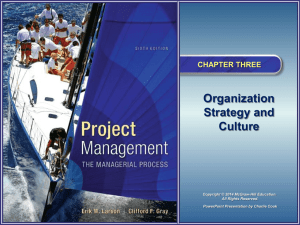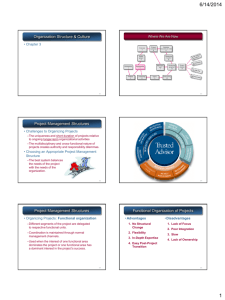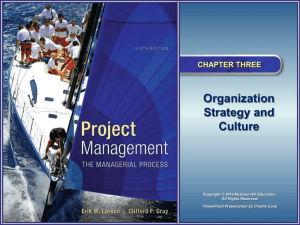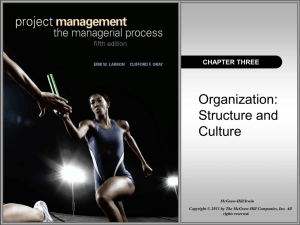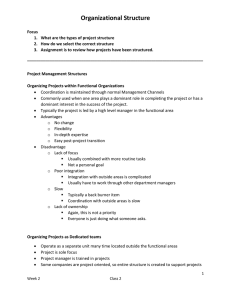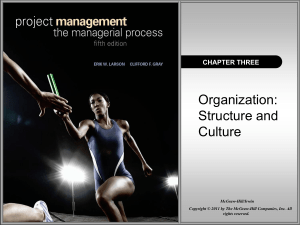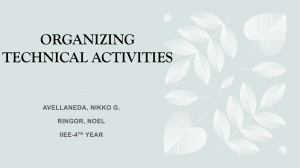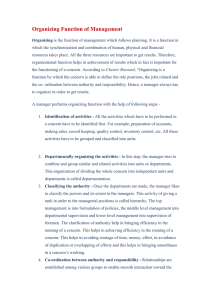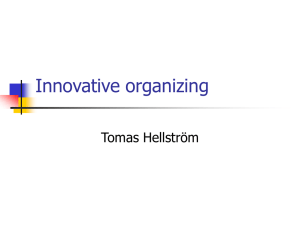CHAPTER THREE: PROJECT MANAGEMENT STRUCTURES
advertisement
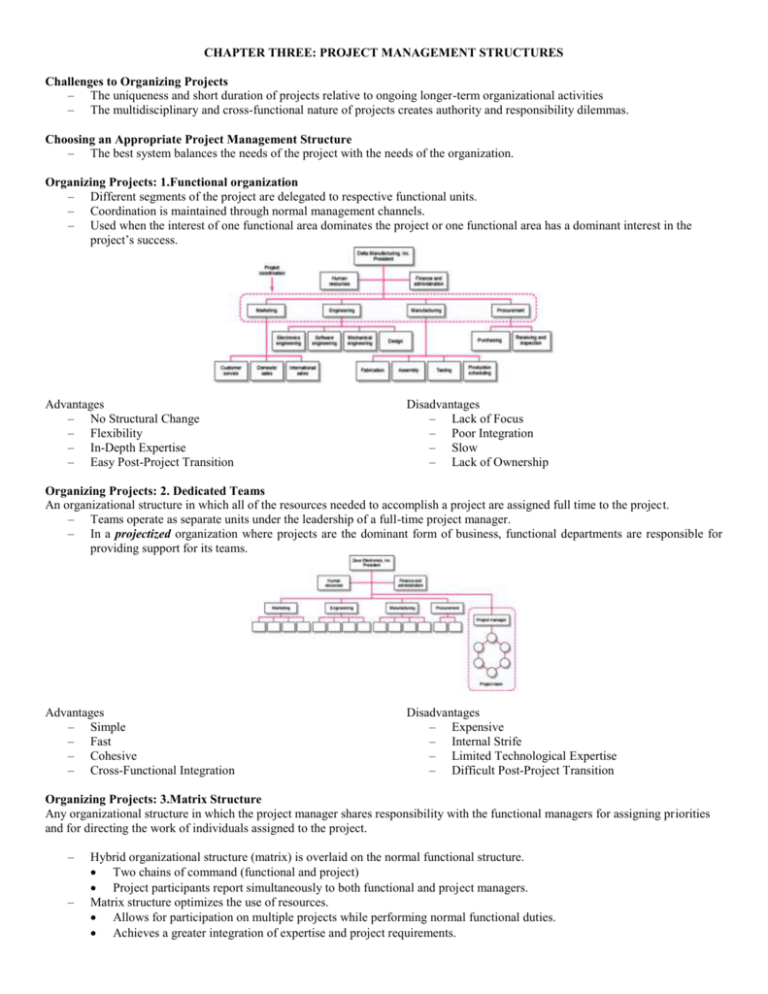
CHAPTER THREE: PROJECT MANAGEMENT STRUCTURES Challenges to Organizing Projects – The uniqueness and short duration of projects relative to ongoing longer-term organizational activities – The multidisciplinary and cross-functional nature of projects creates authority and responsibility dilemmas. Choosing an Appropriate Project Management Structure – The best system balances the needs of the project with the needs of the organization. Organizing Projects: 1.Functional organization – Different segments of the project are delegated to respective functional units. – Coordination is maintained through normal management channels. – Used when the interest of one functional area dominates the project or one functional area has a dominant interest in the project’s success. Advantages – No Structural Change – Flexibility – In-Depth Expertise – Easy Post-Project Transition Disadvantages – Lack of Focus – Poor Integration – Slow – Lack of Ownership Organizing Projects: 2. Dedicated Teams An organizational structure in which all of the resources needed to accomplish a project are assigned full time to the project. – Teams operate as separate units under the leadership of a full-time project manager. – In a projectized organization where projects are the dominant form of business, functional departments are responsible for providing support for its teams. Advantages – Simple – Fast – Cohesive – Cross-Functional Integration Disadvantages – Expensive – Internal Strife – Limited Technological Expertise – Difficult Post-Project Transition Organizing Projects: 3.Matrix Structure Any organizational structure in which the project manager shares responsibility with the functional managers for assigning priorities and for directing the work of individuals assigned to the project. – – Hybrid organizational structure (matrix) is overlaid on the normal functional structure. Two chains of command (functional and project) Project participants report simultaneously to both functional and project managers. Matrix structure optimizes the use of resources. Allows for participation on multiple projects while performing normal functional duties. Achieves a greater integration of expertise and project requirements. Matrix Forms – – – Functional (also Weak or Lightweight) Form: A matrix structure in which functional managers have primary control over project activities and the project manager coordinates project work. Balance (or Middleweight) Form: A matrix structure in which the project manager and functional managers share roughly equal authority over the project. The project manager decides what needs to be done; functional managers are concerned with how it will be accomplished. Strong (Heavyweight) Form: A matrix structure in which the project manager has primary control over project activities and functional managers support project work.. Organizing Projects: 5.Network Organizations An alliance of several organizations for the purpose of creating products or services Advantages – Cost Reduction – High Level of Expertise – Flexible Choosing the Appropriate Project Management Structure – How important is the project to the firm’s success? – What percentage of core work involves projects? – What levels of resources (human and physical) are available? – Need for integration (number of departments involved) Disadvantages – Coordination of Breakdowns – Loss of Control – Conflict – – – – – – Environmental complexity (number of external interfaces) Stability of resource requirements Novelty and need for innovation Budget and time constraints Strategic importance Size of project
